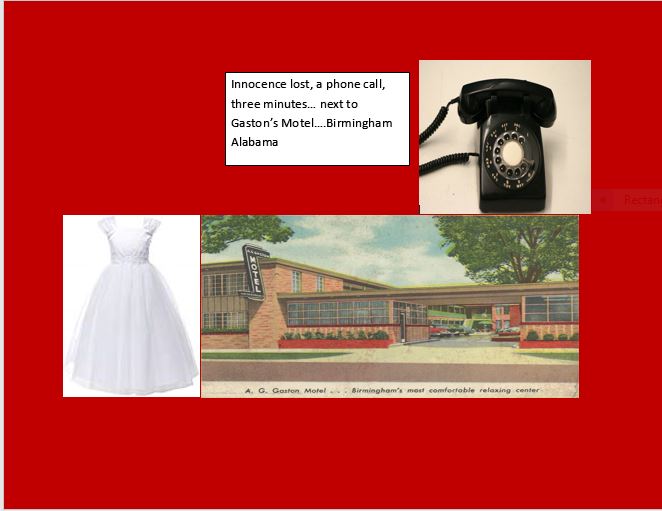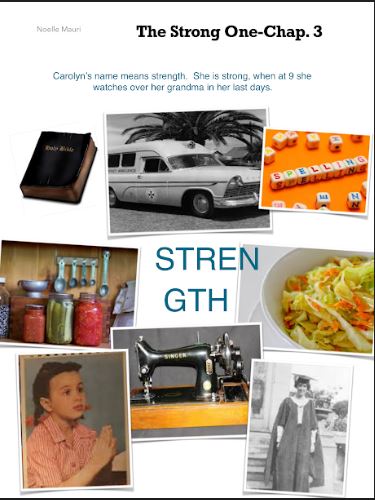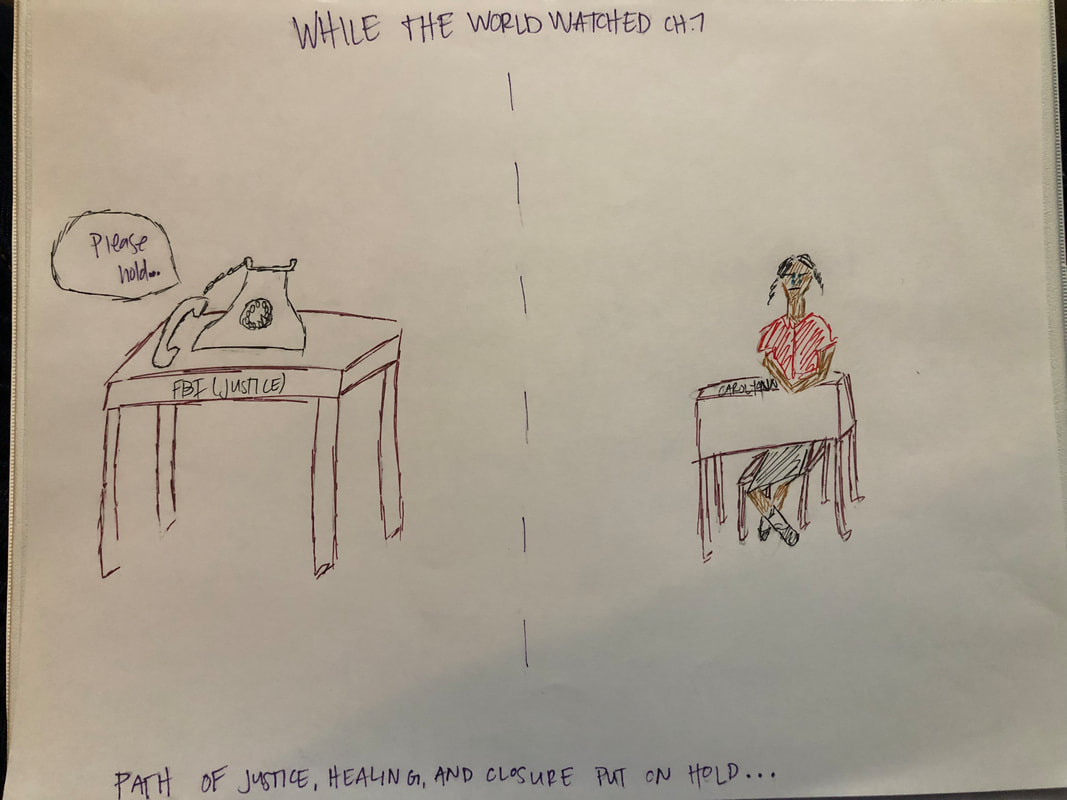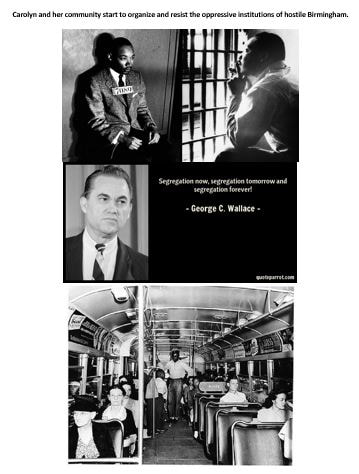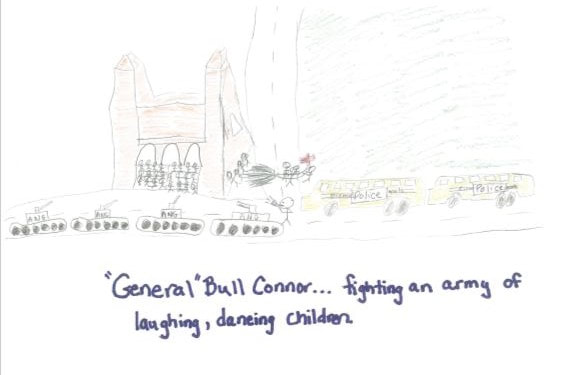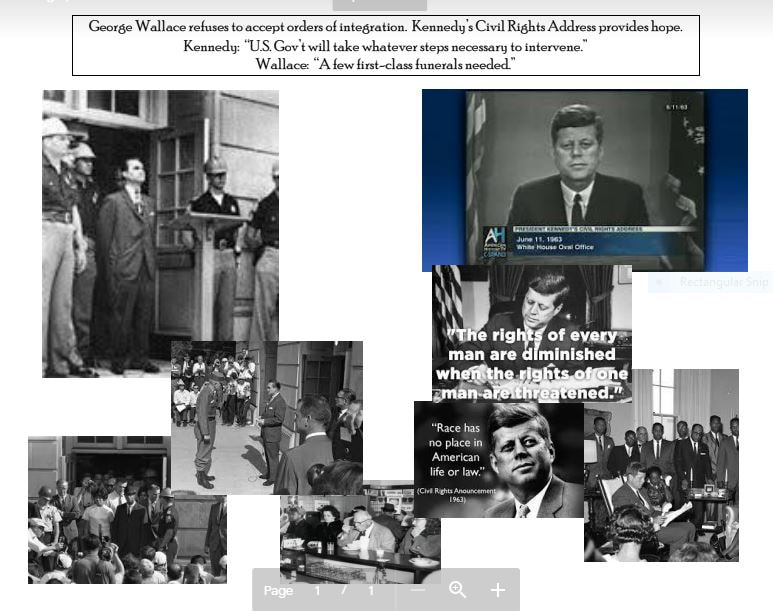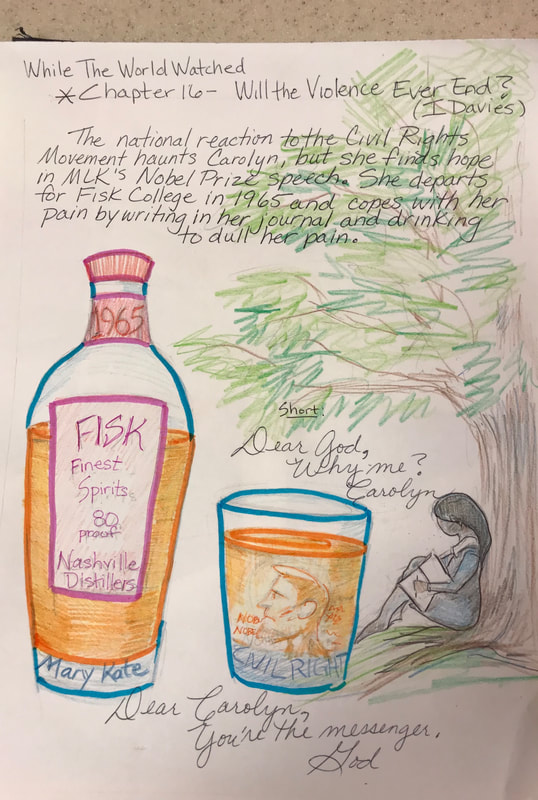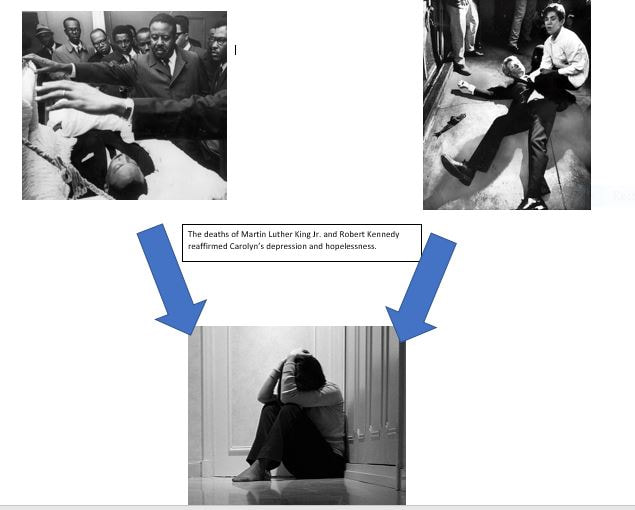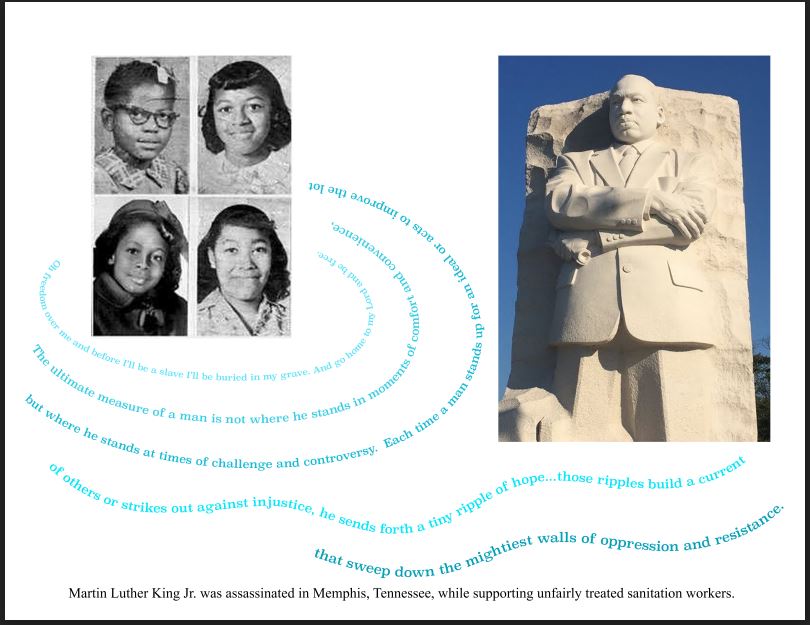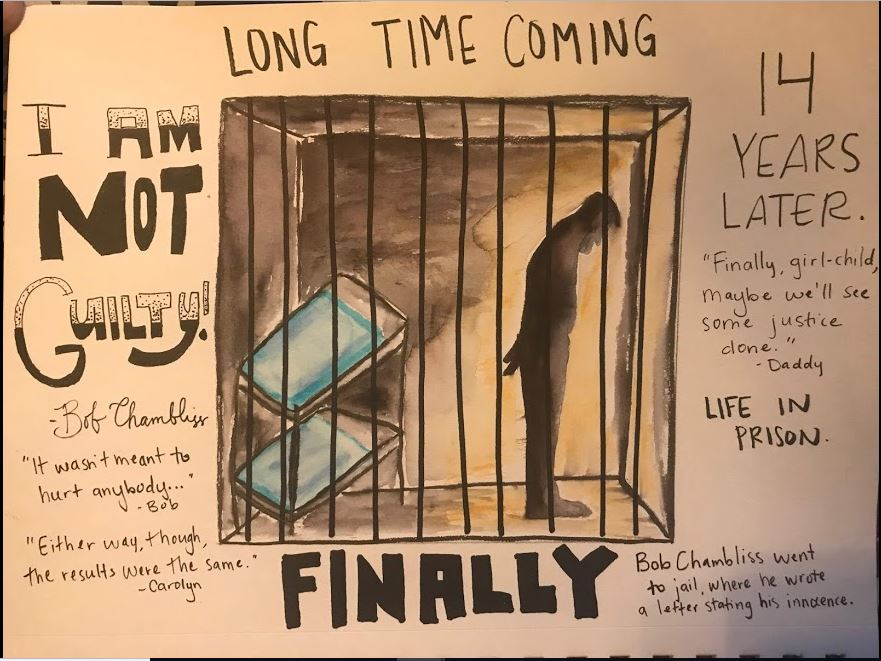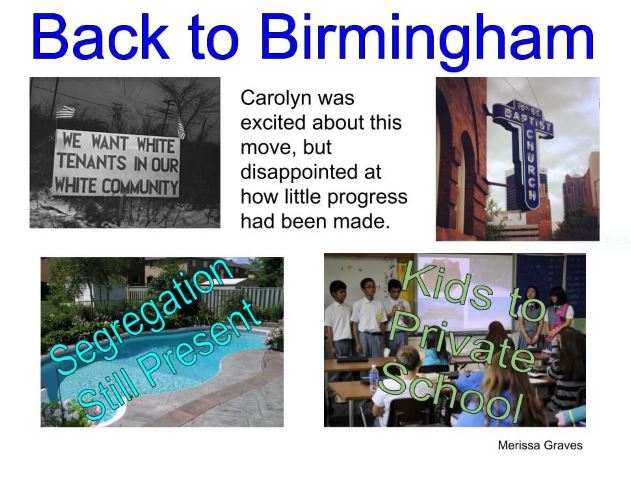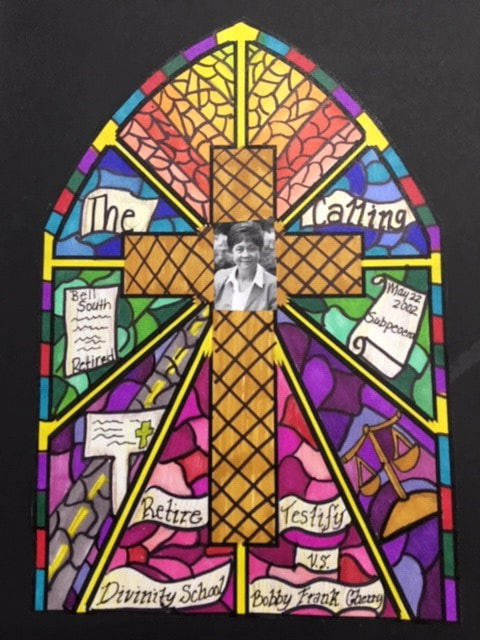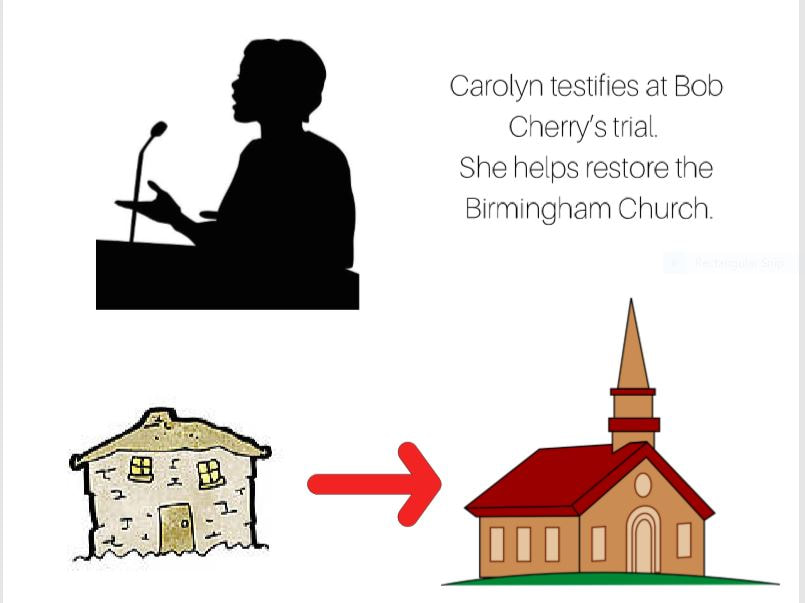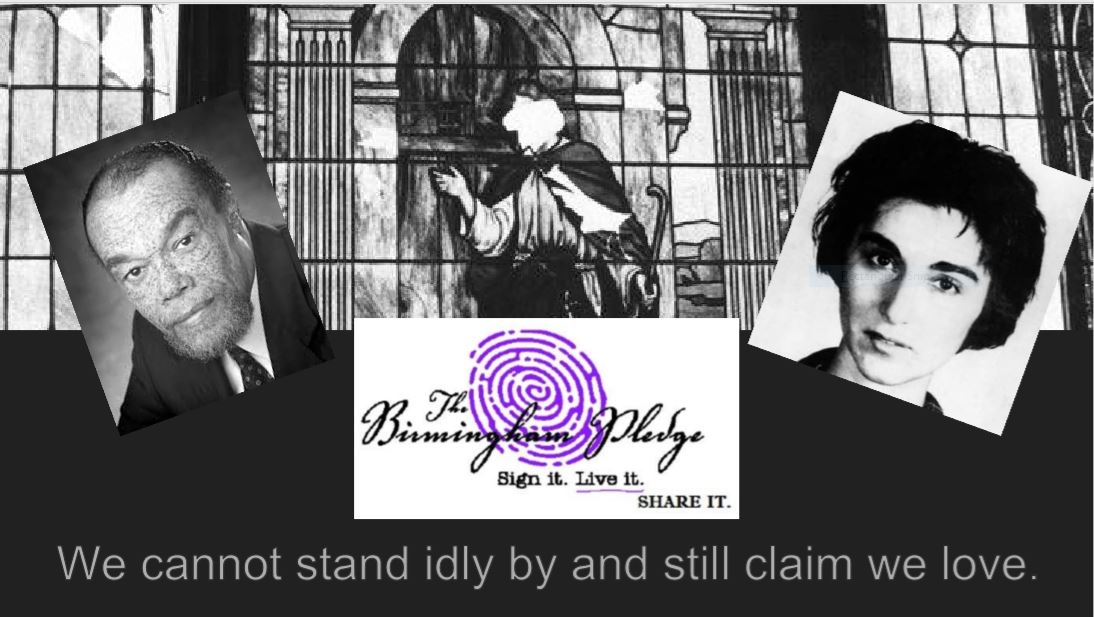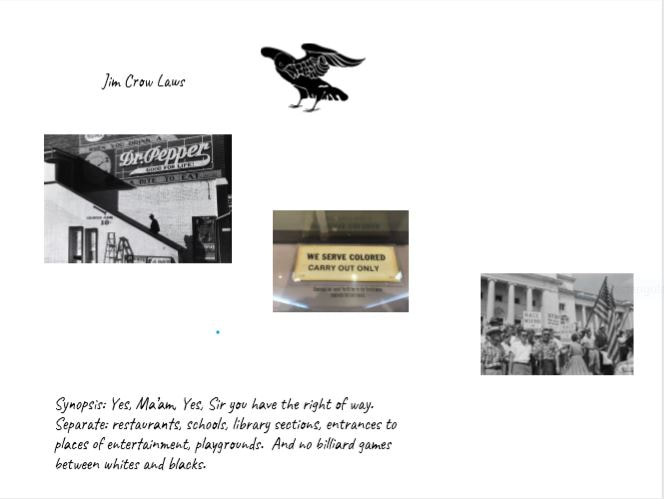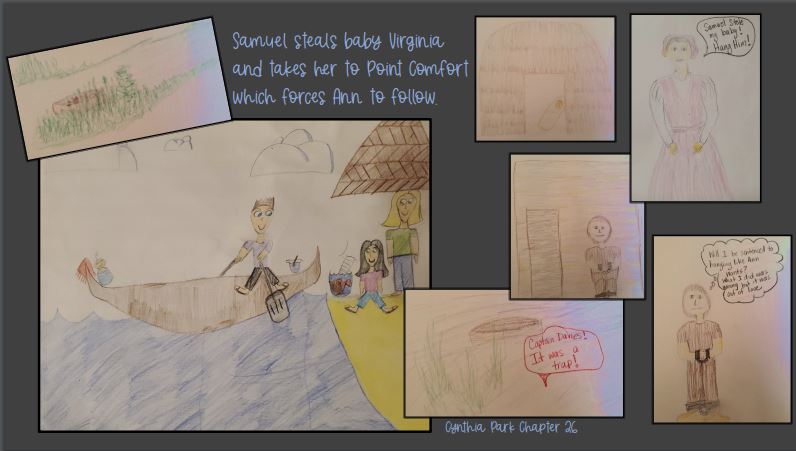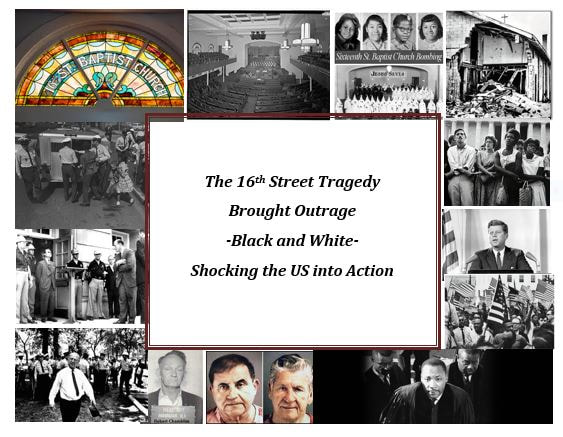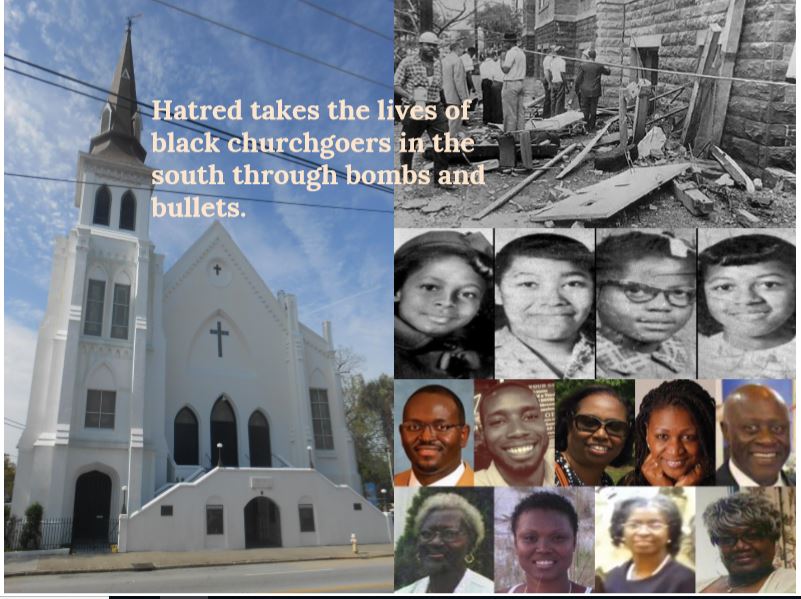rEADING 1Innocence lost, a phone call, three minutes… next to Gaston’s Motel….Birmingham Alabama
In chapter we get a glimpse of the morning BEFORE the author goes to her church. We meet parts of her family briefly, including her parents, younger sister, and brothers. Her younger sister, as luck would have it, didn’t make it to church that morning because she wouldn’t allow her sister to iron her hair. We learn that the father is a teacher during the day and has a second job at a “whites only” country club. He is protective of his children, teaching them the “rules” of society in Alabama to be safe. We learn briefly of some her friends- who may attend the same church. Finally, we learn of the phone calls of the morning to the church, and one that she takes claiming “three minutes.” |
READING 3Carolyn's name means strength. She is strong when at 9 she watches over grandma in her last days.
Names have power, and Carolyn's mane means the "strong one." She reflects on how her grandparents instilled confidence in her, and her abilities by reminding her of what her name means. When Carolyn is 9, she is given a task to help care for her Grandma, "Mama Lessie" as she dies. Carolyn had to watch her grandma lie in pain, in a closed in basement, at the hospital for two weeks. Reflections of her Grandma's life and what she taught Carolyn are recounted fondly. |
rEADING 7Path of justice, healing, and closure put on hold.
Carolyn Maull McKinstry explains the results of the investigation conducted right after the bombing of the Sixteenth Street Baptist Church. The FBI identified four members of the Ku Klux Klan that planted the bomb; Robert E. Chambliss, Bobby Frank Cherry, Herman Frank Cash, and Thomas E. Blanton Jr. The investigation was closed and sealed by the FBI office (J. Edgar Hoover) with no one charged for the bombing due to insufficient evidence |
rEADING 9Carolyn and her community start to organize and resist the oppressive institutions of hostile Birmingham.
In January of 1963 George C. Wallace, outspoken segregationist, became the Governor of Alabama. His victory sent a clear message to African Americans who had organized and fought for equal rights for years. Carolyn, being swept up in the excitement of the movement tests the waters of resistance by sitting in the “white section” of the bus and joining meetings with Martin Luther King Jr. and other prominent Civil Rights leaders at Sixteenth Street Baptist Church. |
rEADING 10“General” Bull Connor… fighting an army of laughing, dancing children.
“D-Day”- May 2, 1963: Thousands of youth (mostly children planned to peacefully protest at the 16th Street Baptist Church. Carolyn had been waiting for this day and is excited to participate, until she arrives and realizes that the “peaceful” element is not to be. Bull Connor, commissioner of public safety for Birmingham, has arrived with a small army to arrest and subdue the protesters- calling on the city school buses to transport them to jail with the regular vehicles run out of room, and the fire department to sprat them with high powered hoses. All the while, the youth smiled, dance and sang. |
READING 12George Wallace refuses to accept orders of integration. Kennedy’s Civil Rights Address provides hope.
Kennedy: “U.S. Gov’t will take whatever steps necessary to intervene.” Wallace: “A few first-class funerals needed.” The Most Dangerous Racist in America “George Wallace is perhaps the most dangerous racist in America - ” Dr. Martin Luther King, Jr. George Wallace, Alabama Governor, fights integration “fiercely” claiming state’s rights. He promises Segregation today! Segregation tomorrow! Segregation forever! Wallace physically blocks doors at University of Alabama to keep black students out. President Kennedy federalizes Alabama National Guard and Wallace’s attempt fails. Kennedy addresses the nation with his Civil Rights Address in support of equal rights. “Who among us would be content to have the color of his skin changed and stand in his place?” Carolyn feels support from Kennedy, goes to a department store, orders hot dog, fries, and a drink and is served! It IS a big deal to her. Wallace signs an executive order, stating that no student shall be permitted to integrate the public schools of the city of Birmingham, Alabama. Pres. Kennedy issues a report on desegregation in the schools of Alabama. Wallace’s response: Alabama needed a few first class funerals. |
READING 17The deaths of Martin Luther King Jr. and Robert Kennedy reaffirmed Carolyn’s depression and hopelessness.
Carolyn continues with the chronology of assassinations in the Civil Rights movement. Dr. Martin Luther King Jr. and Robert Kennedy are both killed in 1968 while Carolyn is studying at Fisk University. On the night of the assassination of MLK, Carolyn crouches in fear in her dorm hallway. She reflects on both of these men and the leadership they brought to the Civil Rights movement. She feels heavy with the loss of these great men. Martin Luther King Jr. was assassinated in Memphis, Tennessee while supporting unfairly treated sanitation workers.
Attending Fisk University, Carolyn has begun to see progress in the Civil Rights movement, as public places slowly become less segregated; schools, departments stores, lunch counters, and swimming pools; African-Americans could register to vote. Then it happened. The leader of the Civil Rights movement was assassinated in Memphis. In the span of a decade, at the age of 21, Carolyn experienced the death of her grandmother, her four friends, and three leaders that gave her hope. |
READING 21Carolyn was excited about the move, but disappointed at how little progress had been made.
Carolyn was excited about the move back to Birmingham. She wanted to give her children all the opportunities she missed out on growing up there. She was excited to go back to her church. Birmingham had not made much progress. The city found ways with jobs, schools, and swimming pools to still practice segregation. Carolyn and Gerome took all possible steps to protect their children. Gerome started to notice just how much of a part Carolyn played concerning civil rights in Birmingham, when newspaper started asking her for interviews |
READING 22The Calling, Bell South, May 22, 2002 subpoena, retire, divinity school, testify vs Bobby Frank Cherry.
Children grown, Carolyn prays for a calling from God. A passing billboard said “Faith always takes the first step” inspires her. God’s will asks her to retire from Bell South, and attend divinity school. Shortly before retiring, Carolyn receives a subpoena in Bobby Frank Cherry’s case. As one of the bombers of the 16th street church, she is terrified to testify. Carolyn finds herself catapulted back to age fifteen when the tragic bombing occurred. |
READING 24We cannot stand idly by and still claim we love.
Carolyn Maull McKinstry’s epilogue from While the World Watched is one of great reflection. McKinstry’s relationship with God and Jesus Christ takes central focus as she heals from past pain later on in her adult life. Calling on all to love their neighbour more (following a description of a woman’s seemingly lonely demise), McKinstry discussed the Birmingham Pledge and its role in humanizing the fight for racial equality. We must fight for and with love. |
READING 26Racism causes PTSD, even microaggressions can lead to long term damage.
Dr. Monnica T. Williams wrote an article about how racism causes trauma in those that experience it, from microaggressions to full on hate crimes. Many times when we think of the damage that racism causes we think of the images above but the effects of everyday exposure to racism of being followed in stores, people moving away fom you on the subway can lead to feelings of paranoia that can lead to PTSD symptoms. |
READING 27The 16th street tragedy brought outrage-Black and White- shocking the US into action.
Bombings were commonplace in Birmingham, Alabama, the most racially tense US city. Nicknamed “Bombingham” due to regular KKK attacks, September 15, 1963 was too much. With the martyrdom of four girls, the chapel and SCLC rallying point now represented the depth of segregation’s social injustice. Martin Luther King, jr and John Kennedy called citizens to action. Men like Governor Wallace and Bull Conner would no longer go unchecked; eventually four Klansman were brought to justice. |
rEADING 28Parallels between Birmingham and Charleston
Hatred takes the lives of black churchgoers in the South through bombs and bullets. The 1963 bombing of a black church in Birmingham, Alabama takes the lives of 4 young girls. 14 years after the bombing 3 former members of the KKK are convicted for the attack. 52 years later, Dylan Roof enters a historical black church in Charleston, South Carolina with the intention of ending black lives. He fires 70 shots and kills 9 people before walking out. Roof leaves churchgoer Polly Sheppard alive to “tell the story.” |

